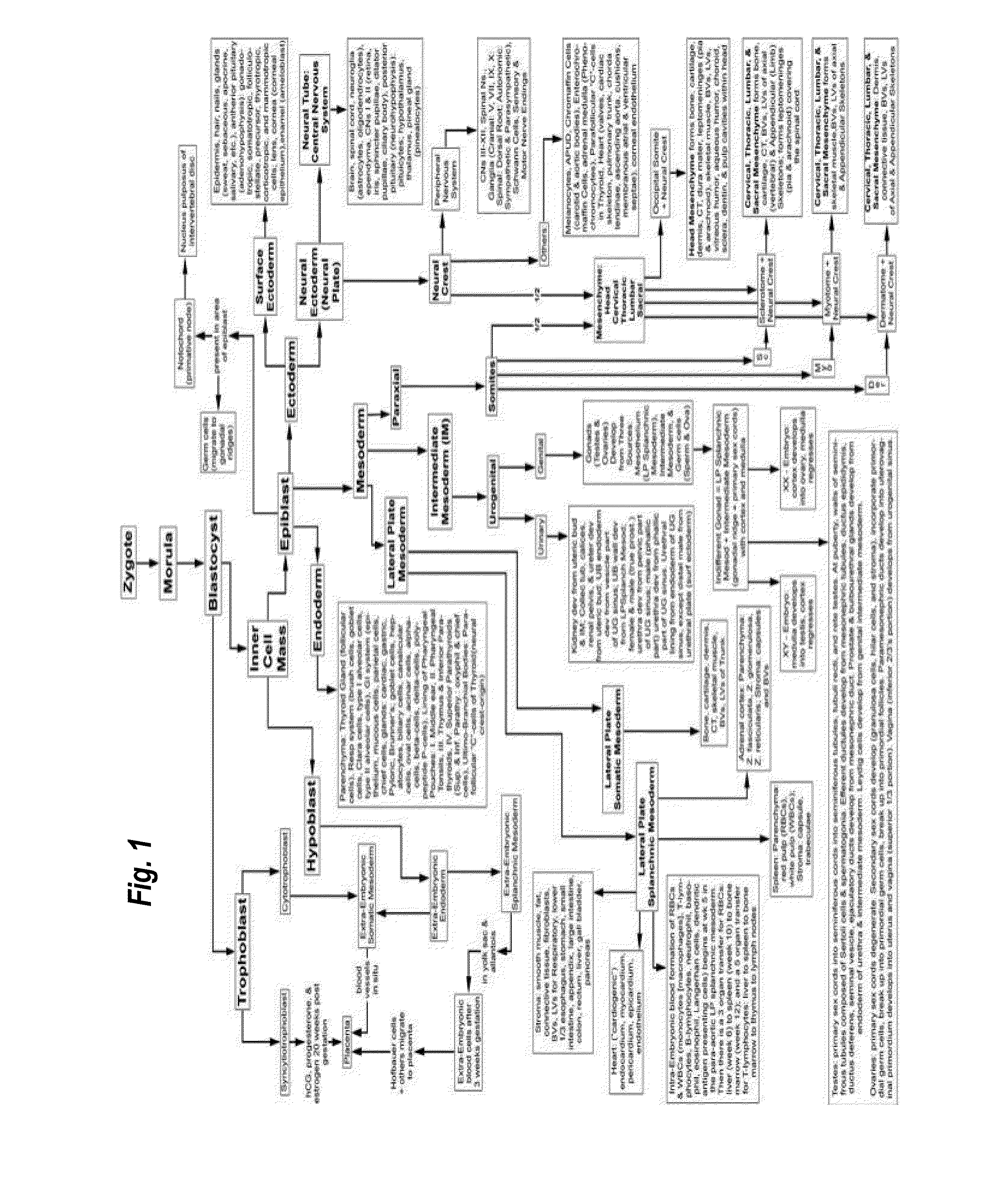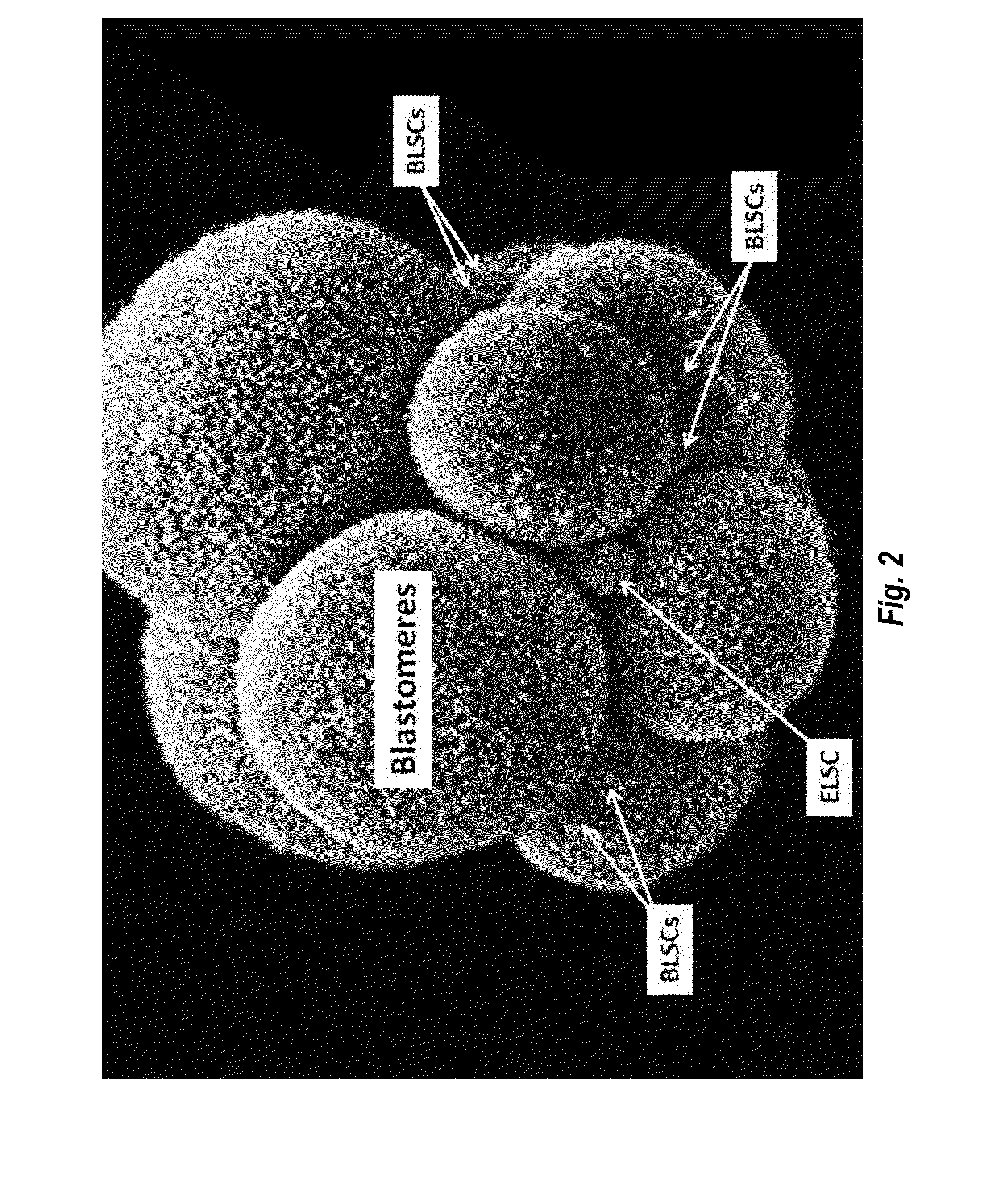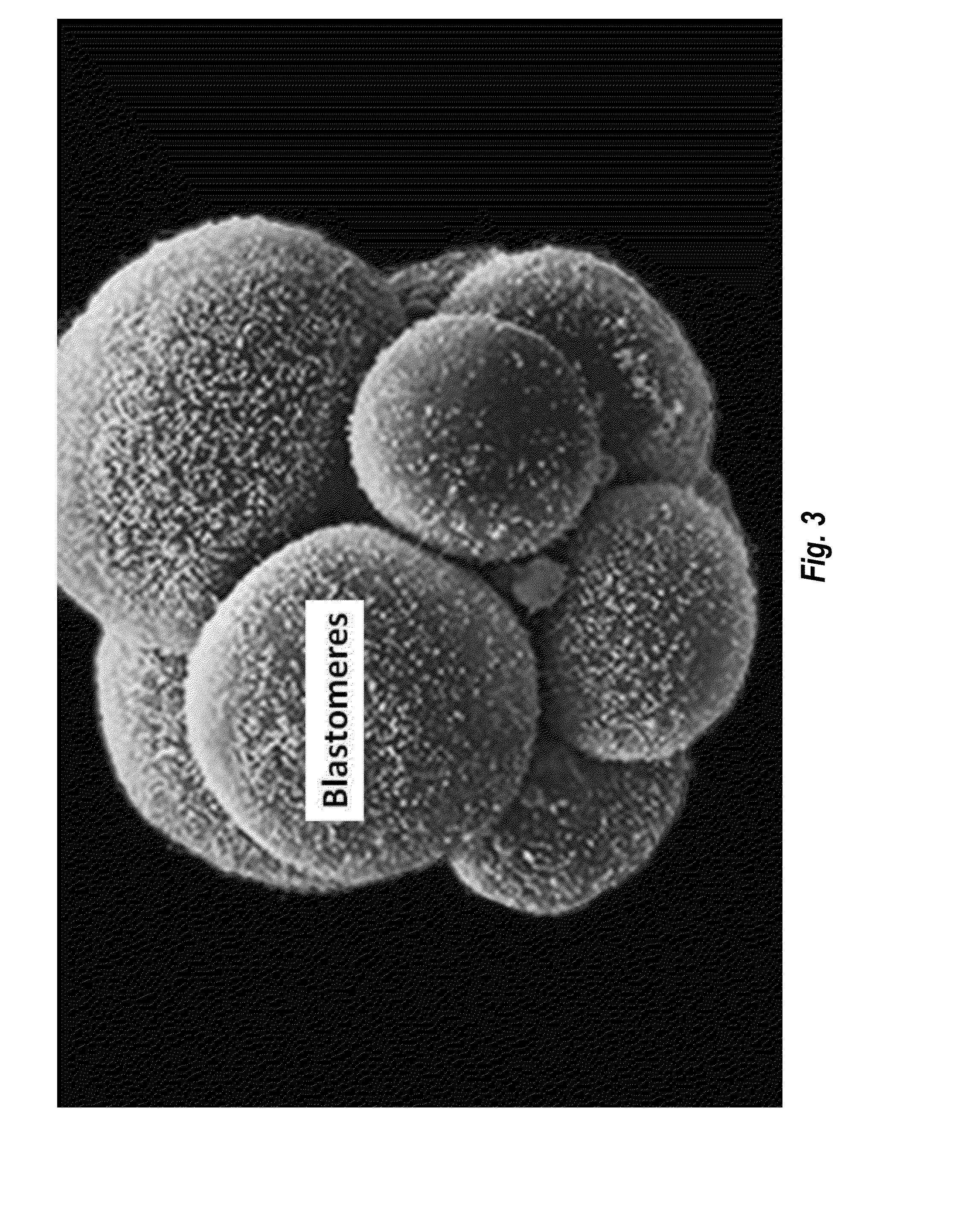Identification, proliferation in situ, harvesting, separation, and transplantation of adult-derived regenerative pluripotent transitional blastomere-like stem cells and methods of treatment thereof
- Summary
- Abstract
- Description
- Claims
- Application Information
AI Technical Summary
Benefits of technology
Problems solved by technology
Method used
Image
Examples
Embodiment Construction
[0238]The inventor has unexpectedly discovered that adult-derived regenerative pluripotent transitional blastomere-like stem cells can be obtained from the blood of mammals, particularly from human, (but also mouse, rat, rabbit, cat, dog, sheep, goat, pig, cow, and horse) (FIG. 78), wherein such stem cells have a combination of both blastomeric-like stem cell and epiblast-like stem cell characteristics and wherein the stem cells are isolated from the blood of the mammal or human without killing the mammal or human. Typically, such adult-derived regenerative pluripotent transitional blastomere-like stem cells are isolated from the vasculature of a post-natal (most typically adult, but also infants, adolescents, and pre- and post-puberal teenagers) humans and mammals and are 3-5 microns in size in the unfixed state. It should be particularly appreciated that the adult-derived regenerative pluripotent transitional blastomere-like stem cells according to the inventive subject matter tha...
PUM
 Login to View More
Login to View More Abstract
Description
Claims
Application Information
 Login to View More
Login to View More - R&D Engineer
- R&D Manager
- IP Professional
- Industry Leading Data Capabilities
- Powerful AI technology
- Patent DNA Extraction
Browse by: Latest US Patents, China's latest patents, Technical Efficacy Thesaurus, Application Domain, Technology Topic, Popular Technical Reports.
© 2024 PatSnap. All rights reserved.Legal|Privacy policy|Modern Slavery Act Transparency Statement|Sitemap|About US| Contact US: help@patsnap.com










